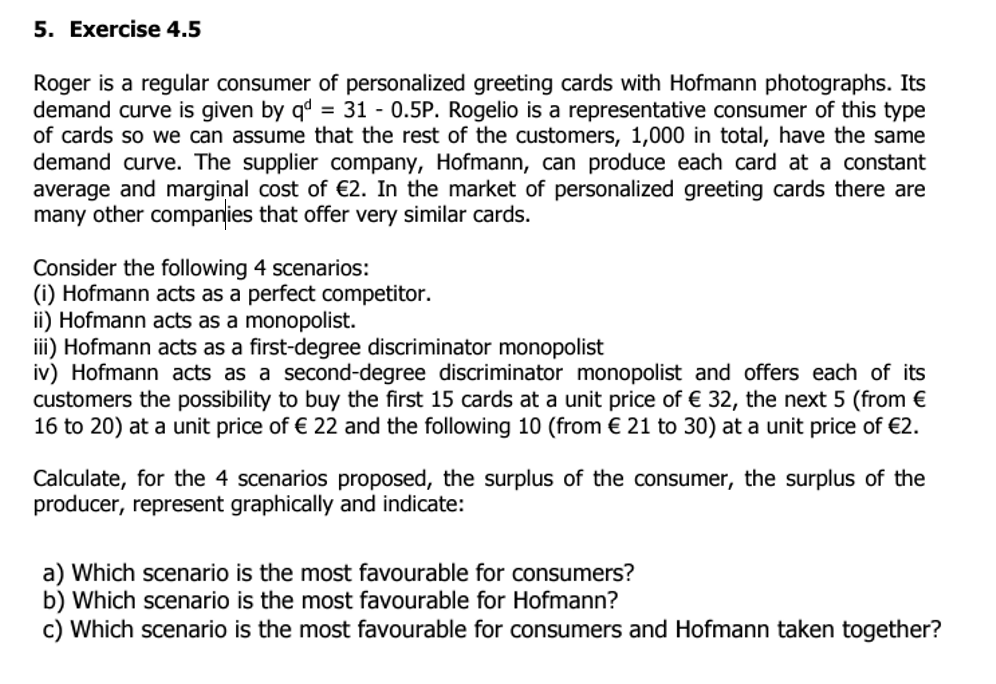Roger is a regular consumer of personalized greeting cards with Hofmann photographs. Its demand curve is given by qd = 31-0.5P. Rogelio is a representative consumer of this type of cards so we can assume that the rest of the customers, 1,000 in total, have the same demand curve. The supplier company, Hofmann, can produce each card at a constant average and marginal cost of €2. In the market of personalized greeting cards there are many other companies that offer very similar cards.
Roger is a regular consumer of personalized greeting cards with Hofmann photographs. Its demand curve is given by qd = 31-0.5P. Rogelio is a representative consumer of this type of cards so we can assume that the rest of the customers, 1,000 in total, have the same demand curve. The supplier company, Hofmann, can produce each card at a constant average and marginal cost of €2. In the market of personalized greeting cards there are many other companies that offer very similar cards.
Chapter13: Factor Markets: With Emphasis On The Labor Market
Section: Chapter Questions
Problem 4QP: Compare the firms least-cost rule with how buyers allocate their consumption dollars.
Related questions
Question
100%

Transcribed Image Text:5. Exercise 4.5
Roger is a regular consumer of personalized greeting cards with Hofmann photographs. Its
demand curve is given by q = 31 -0.5P. Rogelio is a representative consumer of this type
of cards so we can assume that the rest of the customers, 1,000 in total, have the same
demand curve. The supplier company, Hofmann, can produce each card at a constant
average and marginal cost of €2. In the market of personalized greeting cards there are
many other companies that offer very similar cards.
Consider the following 4 scenarios:
(i) Hofmann acts as a perfect competitor.
ii) Hofmann acts as a monopolist.
iii) Hofmann acts as a first-degree discriminator monopolist
iv) Hofmann acts as a second-degree discriminator monopolist and offers each of its
customers the possibility to buy the first 15 cards at a unit price of € 32, the next 5 (from €
16 to 20) at a unit price of € 22 and the following 10 (from € 21 to 30) at a unit price of €2.
Calculate, for the 4 scenarios proposed, the surplus of the consumer, the surplus the
producer, represent graphically and indicate:
a) Which scenario is the most favourable for consumers?
b) Which scenario is the most favourable for Hofmann?
c) Which scenario is the most favourable for consumers and Hofmann taken together?
Expert Solution
This question has been solved!
Explore an expertly crafted, step-by-step solution for a thorough understanding of key concepts.
Step by step
Solved in 4 steps with 3 images

Knowledge Booster
Learn more about
Need a deep-dive on the concept behind this application? Look no further. Learn more about this topic, economics and related others by exploring similar questions and additional content below.Recommended textbooks for you


Economics (MindTap Course List)
Economics
ISBN:
9781337617383
Author:
Roger A. Arnold
Publisher:
Cengage Learning


Economics (MindTap Course List)
Economics
ISBN:
9781337617383
Author:
Roger A. Arnold
Publisher:
Cengage Learning